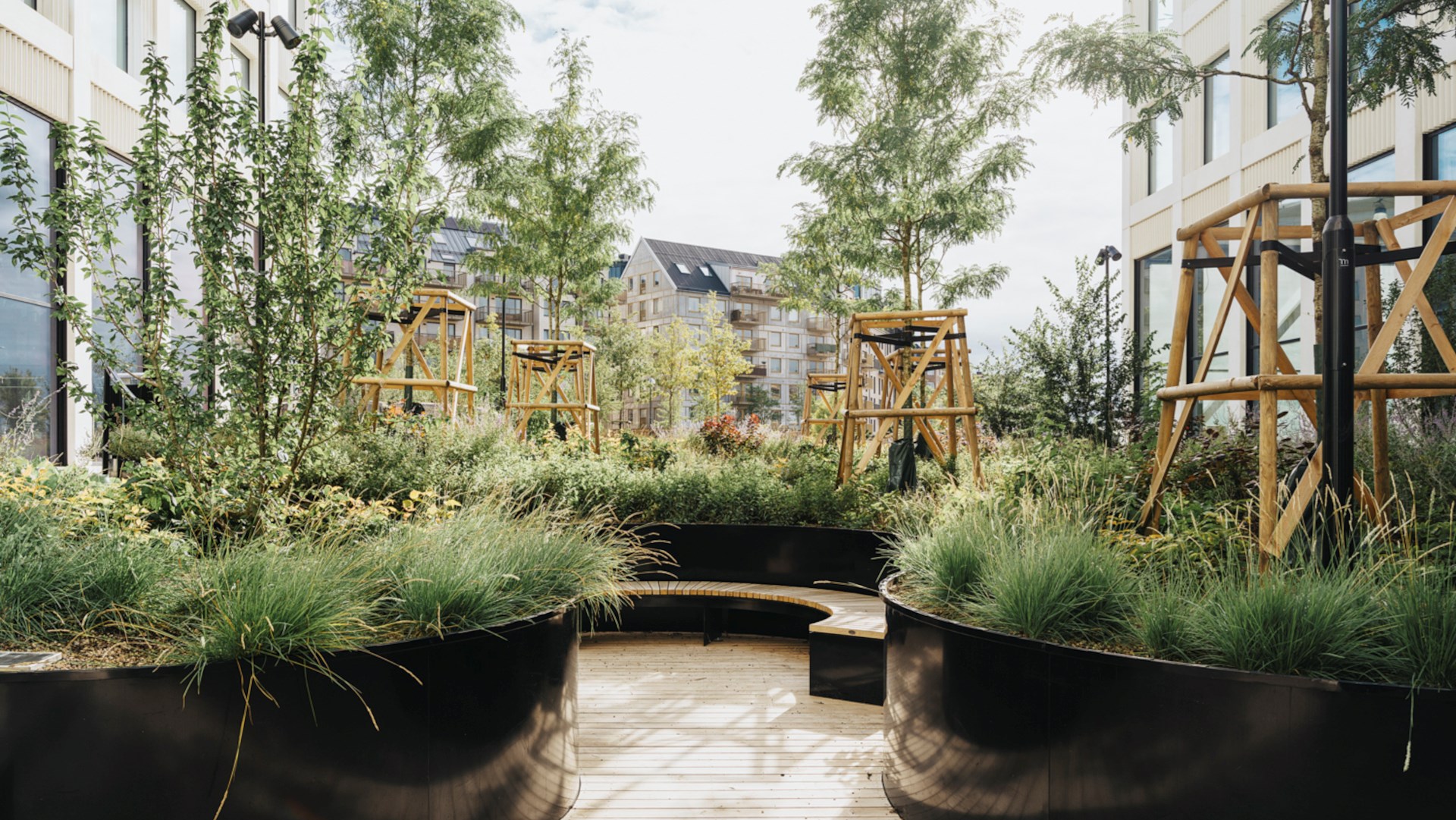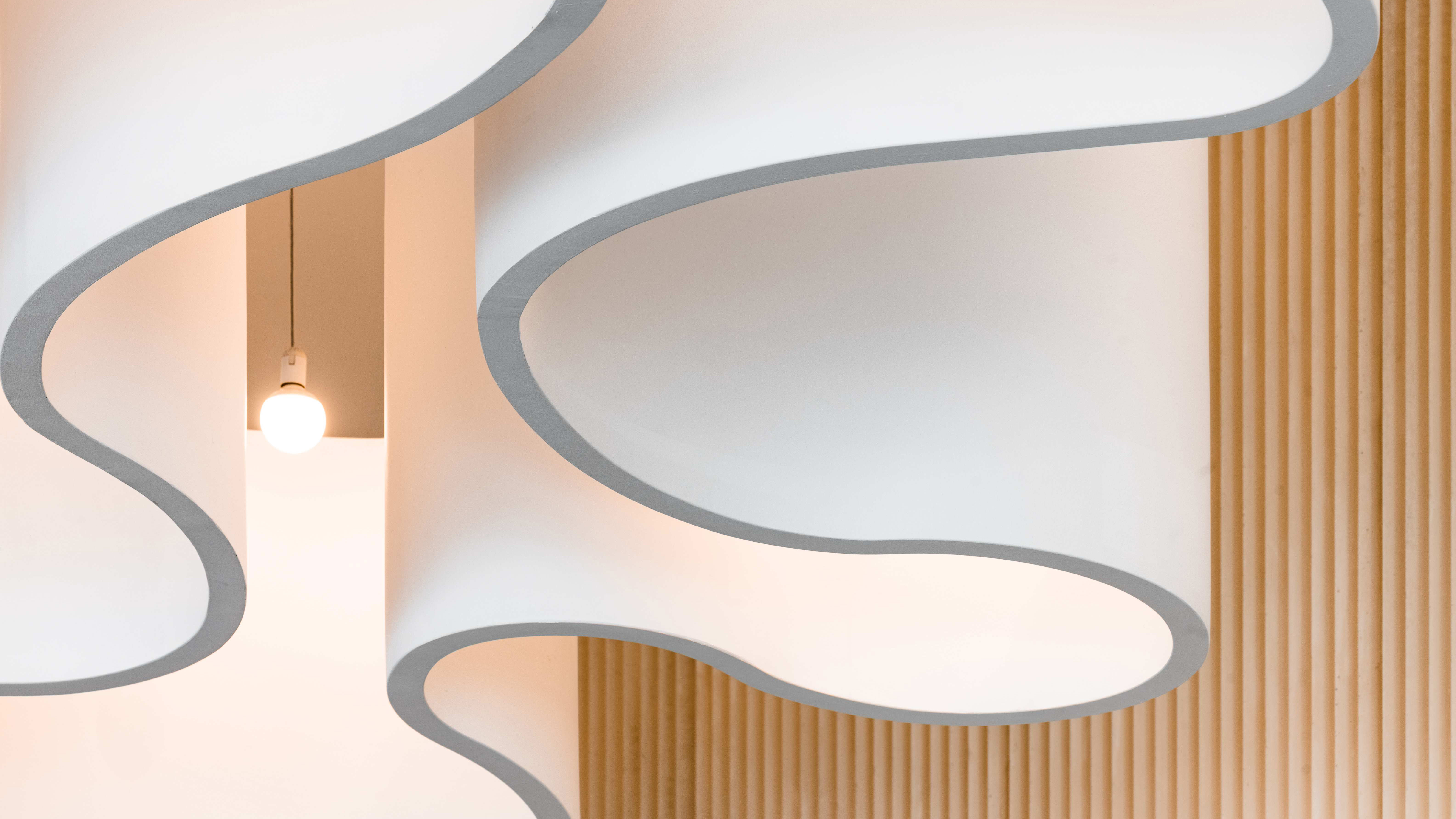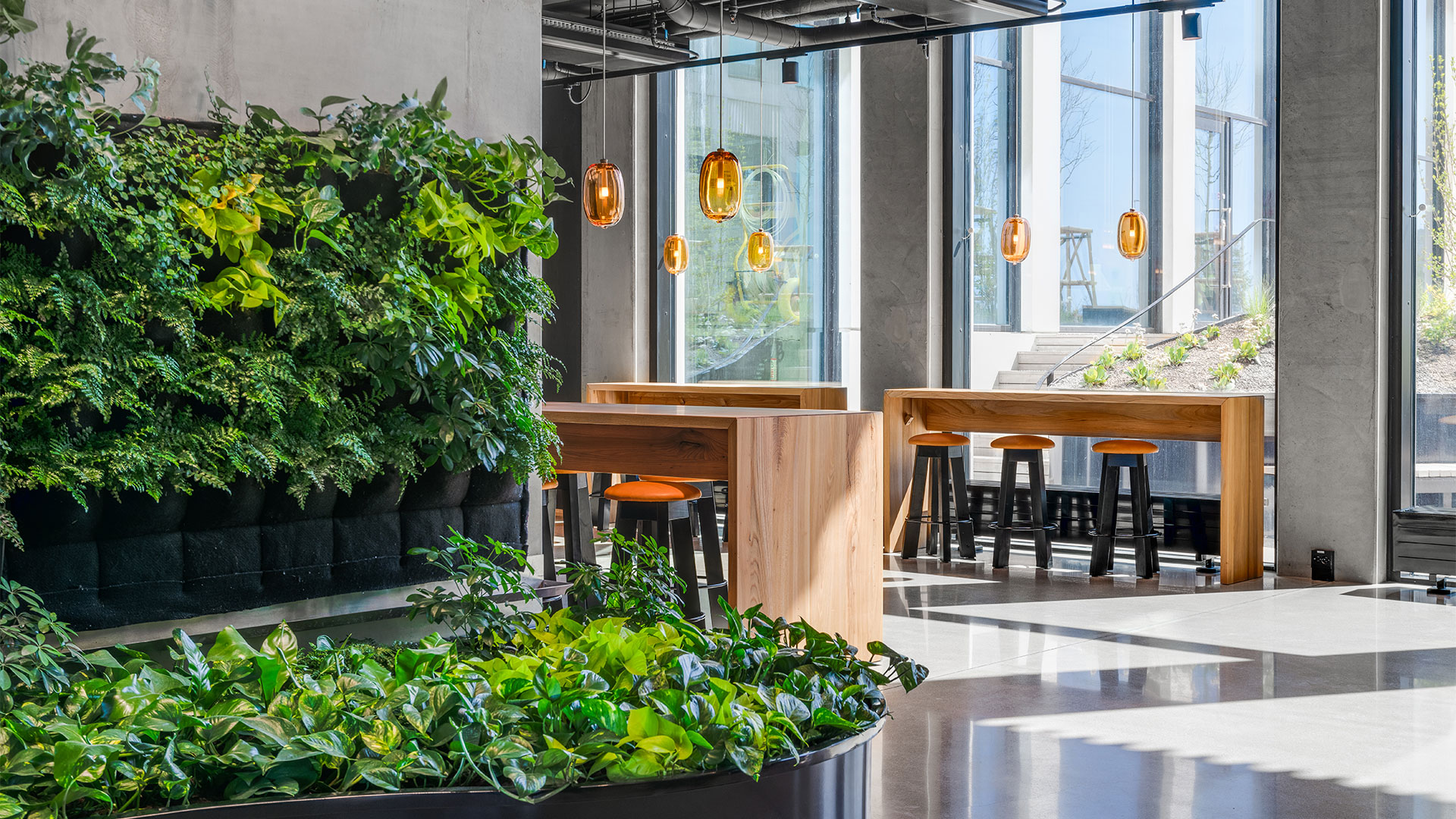
In the final episode of our Shaping Sustainable Places podcast for this season, we take a tour around Hyllie Terrass to see how buildings can be designed and constructed to minimize environmental impacts while maximizing social and economic benefits. We also talk with Lena Hök, our Executive Vice President for Sustainability and Innovation, about the latest trends in sustainability within project development and construction.
Åsa Johansson loves going to work. It’s not just because she enjoys her job but also due to the remarkable environment in which she works. Her office is in Hyllie Terrass, a spectacular Skanska-built terraced structure near Malmö that is one of the most sustainable office buildings in Sweden.
“I’m happy every day I come to work, really,” she says. “To be able to walk straight out from your office floor and having the greenery of the terraces and the view – it brings you such joy to go back to work after that.”
Collaboration the key to reducing carbon
Åsa, a Project Developer with Skanska, says that before work began on constructing Hyllie Terrass, team members analyzed which aspects and components were the biggest contributors to a building’s carbon footprint. They then set out to find and develop lower-carbon alternatives by reaching out to suppliers and collaborating. They placed particular focus on reducing scope 3 emissions related to carbon produced in the value chain.
As well as achieving WELL and LEED Platinum certification, Hyllie Terrass was a pilot project under the Sweden Green Building Council’s new Net Zero certification.
Åsa says one of the outstanding features of Hyllie Terrass is photovoltaic cells on the roof which – together with an innovative energy storage system – allow the building to supplement grid power at peak times such as mornings.
Focus on decarbonization and digitalization
Lena Hök keeps a close eye on developments in sustainable construction as part of her leading role at Skanska. She says two of the biggest trends over the past 12 months have been decarbonization and digitalization.
Through decarbonization, forward-thinking builders and their customers are looking to reduce carbon emissions from both the materials and the energy needed for a structure throughout its construction, operational and end-of-life-phases. As part of the digitalization trend, companies such as Skanska are using data to improve processes and designs. This can include monitoring and controlling the operational efficiency of built structures across their lifespan to reduce resource use and impact.
Lena predicts that energy will continue to be a priority in the years ahead, as well as a focus on infrastructure tied to three major areas: decarbonization, digitalization and deglobalization – creating resilience in supply chains. And speaking of resilience, societies are having to prepare for the increasing effects of climate change, such as flooding, storms and heat.
She says Skanska is working with customers to help them achieve their sustainability targets. This work is made easier when we are involved in projects right from the beginning and can provide input on materials and energy efficiency.
You can tune in, listen and subscribe to the podcast on Spotify, Apple Podcasts and YouTube.


